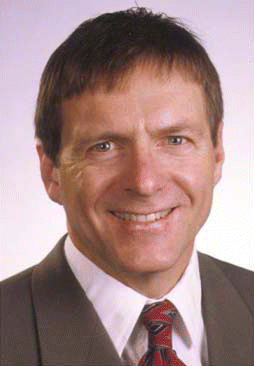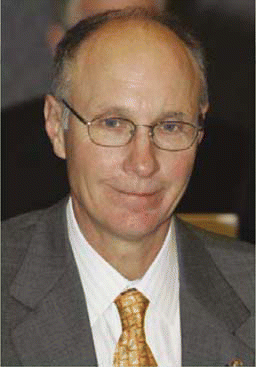The number of people looking for a nip here, a tuck there, a new nose, or higher brows is on the rise. Recent statistics from the American Society of Plastic Surgeons (ASPS) reported that more than 10.2 million people in the United States underwent cosmetic surgery in 2005, representing an 11% increase from the previous year. Of these procedures, 5.4 million were for reconstructive plastic surgery. A slightly higher number of 11.5 million procedures was reported by the American Society for Aesthetic Plastic Surgery (ASAPS), which included both surgical (19%) and nonsurgical (81%) procedures.
Explore This Issue
July 2006Not only are more people seeking cosmetic surgery every year, but more types of people are undergoing these procedures. According to the ASPS statistics, the number of cosmetic plastic surgeries among ethnic minorities increased by 44% from 2000 to 2004. From 2004 to 2005, the number of procedures in these populations increased by 65% with about 2.3 million procedures performed.
With this increased demand for cosmetic plastic surgeries among ethnic minorities, otolaryngologists–head and neck surgeons will be challenged to understand the values and priorities of these groups.
In addition, approval of cosmetic surgery among men is increasing and more men are turning to the knife or chemicals to remedy what nature has either not granted or has taken away. The ASAPS reported that 985,000 men underwent some type of cosmetic plastic surgery in 2005, which represented about 9% of the total number of procedures. Unlike the yearly increases among ethnic minorities, however, procedures in men dropped by 15% from 2004.
Rise in Plastic Surgery among Ethnic Minorities
“The trend for aesthetic plastic surgery in ethnic groups is increasing,” said Mark L. Jewell, MD, past President of the American Society of Aesthetic Plastic Surgery (ASAPS), and a plastic surgeon in private practice in Eugene, Ore. “All cultures find value in aesthetic procedures and the numbers across the board appear to be increasing.”
“All cultures find value in aesthetic procedures and the numbers across the board appear to be increasing.” – —Mark L. Jewell, MD
According to estimates from the ASPS, Hispanic Americans are leading the way with nearly 921,000 cosmetic plastic surgeries performed in 2005, up from 553,000 in 2004. Following are African-Americans who underwent more than 769,000 procedures in 2005, up from 460,000 procedures in 2004. Last are Asian-Americans who underwent about 437,000 procedures in 2005, up from 276,000 in 2004. Overall, ethnic minorities accounted for about 21% of all cosmetic procedures done in 2005, with Hispanics having about 9% of the estimated 10.2 million total cosmetic surgeries in 2005, African-Americans about 8%, and Asians about 4%.
According to Bruce L. Cunningham, MD, MS, President of the American Society of Plastic Surgeons and Professor of Surgery at the University of Minnesota in Minneapolis, rhinoplasty and procedures to minimize the signs of aging are top the list as the most sought after types of cosmetic plastic surgery in these groups. “Rhinoplasty is particularly in demand [as] it has such a strong cultural connotation,” he said. “Surgery to reverse the signs of aging, particularly in the upper face is also more common as this demographic age group decides to use discretionary income for aesthetic surgical procedures.”
Other types of procedures high in demand among these ethnic groups include breast augmentation or reduction, liposuction, and eyelid surgery (for Asians). Along with these surgical procedures, the most common minimally invasive procedures include microdermabrasion, chemical peel, injectable wrinkle fillers, and Botox.
Understanding the Needs of Minority Patients
With this increased demand for cosmetic plastic surgeries among ethnic minorities, otolaryngologists–head and neck surgeons and plastic surgeons will be challenged to understand the values and priorities of these groups. According to Dr. Cunningham, a new level of cultural and ethnic awareness will be required. “Many of these patients have strong ethnic pride, and unlike prior generations, are not as eager to lose that reflection of their heritage,” he said. “Rather, they are seeking to refine the ethnic look within their own cultural norms.”
Dr. Jewell agrees. “I believe that it is important to respect the ethnic features of individuals and to not ‘westernize’ facial features,” he said.
Along with the need for recognition and sensitivity to the cultural and ethnic needs of these populations, otolaryngologists and plastic surgeons need to be aware of specific risks and complications that may accompany plastic surgery in particular ethnic groups. For example, Asian- and African-Americans may be more susceptible to developing adverse scars after surgery, such as keloids and hypertrophic scars, because of the pigmentation of their skin. In addition, pigment irregularities, either hyper- or hypo-pigmentation, may occur after facial procedures such as chemical peels.
Men on the Rise
Women still are the predominant group to undergo cosmetic procedures, making up about 91% of all cosmetic procedures in 2005 based on ASAPS statistics. However, about 9% of all procedures in 2005 were undergone by men. Although the number of surgeries in 2005 for men dropped by about 15% from 2004, a recent survey by the ASAPS found that 21% of men would consider cosmetic surgery—which represented a 50% increase from 2004.
According to the ASAPS, liposuction was the most popular surgical procedure for men in 2005 with 52,543 undergoing this procedure. Second was rhinoplasty in 45,945 men, followed by eyelid surgery in 33,369 men, male breast reduction in 17,730 men, and facelift in 13,041 men. For nonsurgical procedures, 304,124 men had Botox, 232,340 had laser hair removal, 84,423 had microdermabrasion, 44,994 had hyaluronic acid, and 43,083 had laser skin resurfacing.
What Does the Future Hold?
According to leading plastic surgeons in the United States, a continual increase in the number of ethnic minorities who undergo cosmetic procedures can be expected in 2006. Similarly, it is expected that men will be a growing segment of the population undergoing these procedures.
“Many of these patients have strong ethnic pride, and unlike prior generations, are not as eager to lose that reflection of their heritage. Rather, they are seeking to refine the ethnic look within their own cultural norms.” – —Bruce L. Cunningham, MD, MS
As to the specific types of procedures predicted for 2006, Dr. Jewell predicts that “minimally invasive surgery and treatments will continue to increase.” For Dr. Cunningham, learning to use permanent and semi-permanent fillers will be the next big trend, along with the “huge new wave of skin treatments.”
©2006 The Triological Society


Leave a Reply